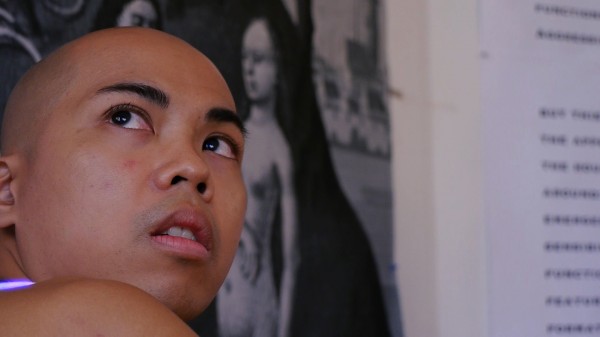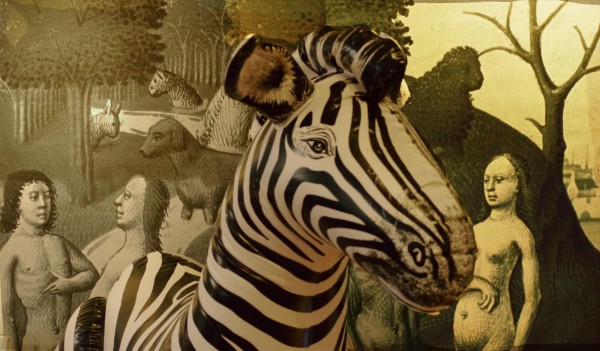
Genesis 2 with Adam, Eve and Zebra
On Saturday and Sunday, October 20th and 21st, 2012 my long term collaborators filmmaker Ilana Rein, actress Kathryn Alexander and JoAnna Shaw, choreographer and founder of the Equus Projects helped re-stage a scene from a 15th-century manuscript illumination (Maitre Francois—National Library of the Hague ) that pictures the origins of humans and animals as represented in Genesis 2.
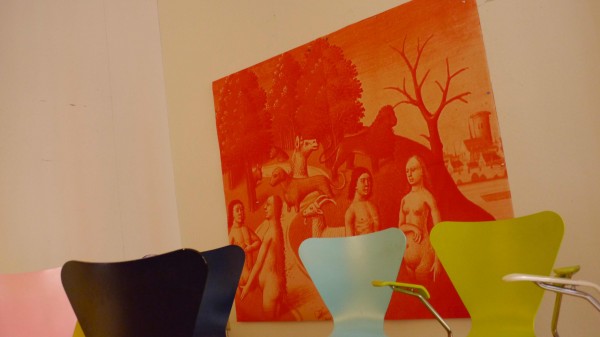
Genesis 2 with chairs

Michael Caines and Richard Saudek
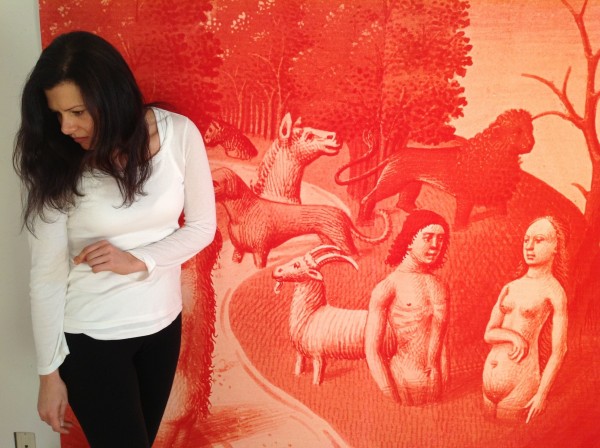
Jay Reidl
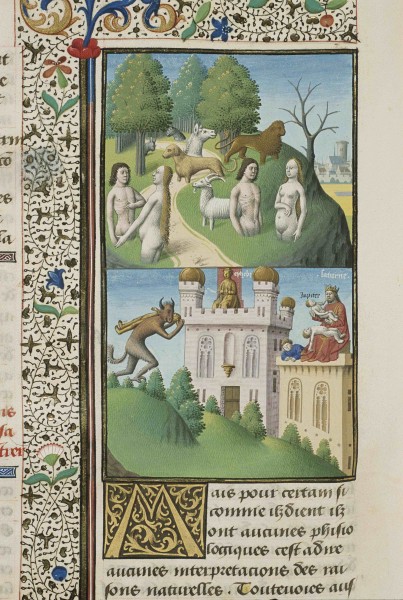
Maitre Francois—City of God, c. 1475
Monti: “It’s a really interesting image. The manuscript is a copy of the French translation of St. Augustine’s City of God. The passage of text just below the image is from Book 6, Ch. 8, which includes Augustine’s commentary on Genesis 2. So, there’s several layers: the image is not just an illustration of a biblical passage but an illustration of a French translation of a Latin commentary on a biblical passage.
Some background:
The French translation was produced by Raoul de Presles, a historian and councilor to King Charles V of France, in the 1370s (or thereabouts — in the last quarter of the 14th century, at any rate). Raoul’s translation inspired new iconographies for illustrations of the City of God text in manuscripts made around 1400. In turn, some of the City of God manuscripts made around 1400 inspired the images in the Maitre François manuscript you’re interested in. So here again, we’re looking at layers of image traditions — the artist of your picture was probably borrowing from several visual sources, including earlier City of God images, as well as pattern-book images. (Pattern-book images are standardized pictures that circulated among artists and may have been used to create serialized images to save time, or may have been customized.)
Thus to answer your questions: there are several reasons why there are no “fowls of the air” in your illustration. They may not have appeared in other, earlier images that served as the model for this one. They may not be stressed in Augustine’s commentary on this passage in Genesis. They may be depicted in another illumination on another folio in the manuscript. They may not have been considered as important to the symbolic meaning of the text or the image by either the artist or the patron. I’m sure there are other possibilities, but those are what I can come up with off the top of my head. To read the full essay as a PDF
Elizabeth Monti—Genesis 2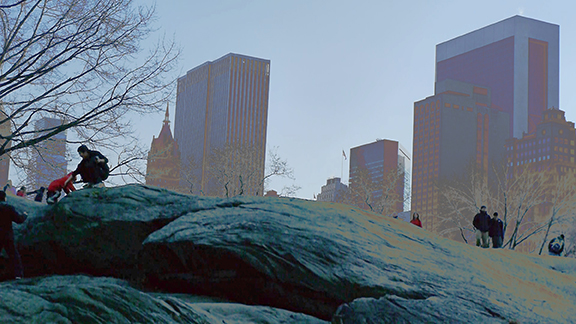
Genesis 2:7, 19
And the Lord God formed man of the slime of the earth: and breathed into his face the breath of life, and man became a living soul…And the Lord God having formed out of the ground all the beasts of the earth, and all the fowls of the air, brought them to Adam to see what he would call them: for whatsoever Adam called any living creature the same is its name.
Spitz: “Curiously, the image doubles its representation of Adam and Eve in the Garden. It seems to me that, if we read across the image from left to right, as is normal when reading a verbal text in Latin or any of the European languages, we can easily imagine a dialogue occurring between the two characters. As in a comic strip, they are doubled because they are shown at different moments in their colloquy. I want to imagine their dialogue after two paragraphs of background:
God creates human beings twice in Genesis. The first time is in Chapter 1. See 1:26, where He fashions them “in his image” so as to “hold sway over” all the other creatures already formed by him and carefully enumerated in the passage. The Hebrew text says explicitly: “And God created the human in his image, in the image of God He created him, male and female He created them.” According to the renowned Biblical scholar, Robert Alter, the term “adam” with the definite article is a general term for human beings and does not denote maleness. We can assume then that human beings are referred to here.” To read the full essay as a PDF Ellen Handler Spitz—Genesis 2



